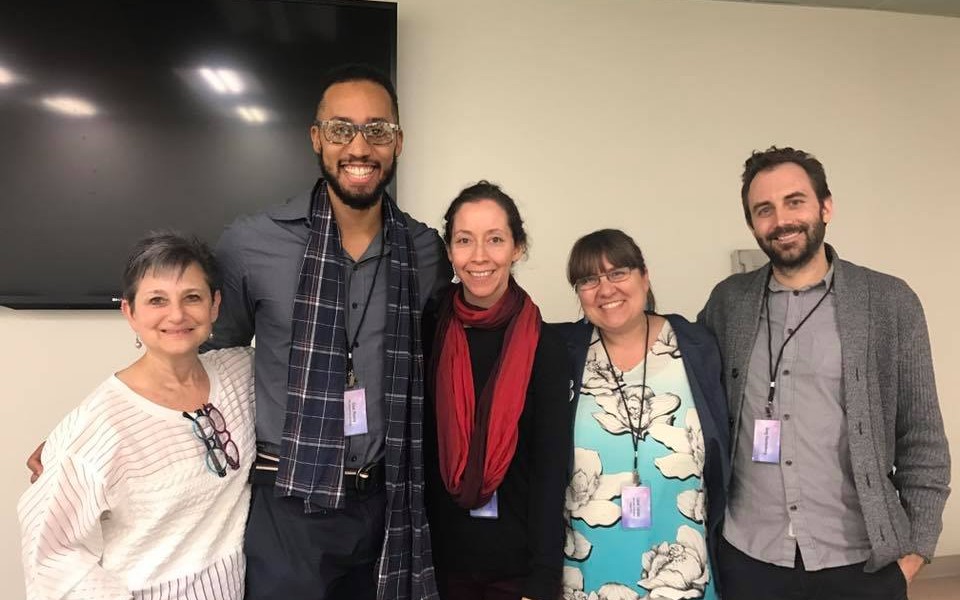Spoke at the MACAA Conference in Cincinnati, Ohio

I had the opportunity to speak at the MACAA Conference in October at the University of Cincinnati (DAAP).
Here is a link to the MACAA conference website: http://www.macaart.org/conference.html
And this is the panel title and description:
Polymodal Sites: Graphic Design in the Expanded Field
Session Chair: Silas Munro, Miami University (Ohio)
The extended terrain of contemporary graphic design practice has its traditional basecamps in typography, image making, form giving, adept use of material craft, and system construction largely applied to the messages of paying clients. These nodes are mere footholds in a now very mature campaign by graphic design to land upon the banks of almost every other discipline under the sun. For at least the past two decades, the academy and profession of graphic design enjoy an ever-widening occupation into research, ethnography, social work, art practice, entrepreneurial endeavors, strategy, education, maker culture, innovation, product design, and social science to name, but a few key sites. Our holdings and collaborations are so massive and multiple we have created new districts at our transdisciplinary fridges to deal with graphic design’s evermore porous edges such as: user experience design, interaction design, social design, human centered design, critical design, speculative design, service design, and transition design. So does this make graphic design an imperialist enterprise encroaching on other fields with intentions of a hostile takeover? Or perhaps graphic design is a series of rebel factions leading a nomadic, co-creative existence with the altruism to solve the world’s (and other field’s) wicked problems? Might we be a practice that has post-colonial problems? In an homage to Rosalind Krauss’ icons use of the Klein group diagram and Greimas’ semiotic square, this panel asks for diverse proposals or provocations from the profession and academy that lay down nodes to map our contemporary field of graphic design as much by what it is as it is not.
The abstract for my talk:
When you make everything bold, nothing is bold
And what you thought you came for
Is only a shell, a husk of meaning…
Either you had no purpose
Or the purpose is beyond the end you figured
And is altered in fulfilment. —T.S. Eliot, Little Gidding
The discipline of graphic design is fraught. We chart our ancestry expansively, etching a squat
tree with a seemingly infinite number of delicate branches, all straining upward and outward.
We ground ourselves in art and architecture, wrap ourselves in literary theory, graft on models
from communication and semiotics, employ research on cognition, coding, community-building,
chaos theory, cartography, cinema. We apply our wares widely, because not only can the
communications and objects that make up our culture be designed, but so can the services,
information streams, organizations, and spaces that we use and inhabit. Design is everywhere,
and everything is designed—merely waiting for the Designer to come and make her mark.
But, if everything is design, then what can we keep for ourselves?
This paper will examine graphic design as a means to manage and manipulate information from
Gutenberg to our discipline’s attempts to define itself at the turn of the 20th century, to the
explosion of design caused by the Internet. It will also briefly explore what might be coming next,
from user experience design and big data, to human-centered and social design. Describing the
artful dissemination of information through visual form is the flag I choose to plant in the current
vast landscape of our discipline.
And finally, here is a video of my presentation:
When you make everything bold, nothing is bold from Liese Zahabi on Vimeo.
